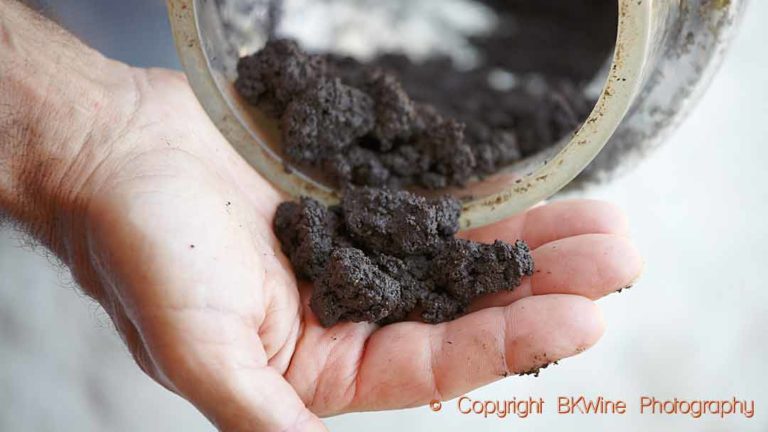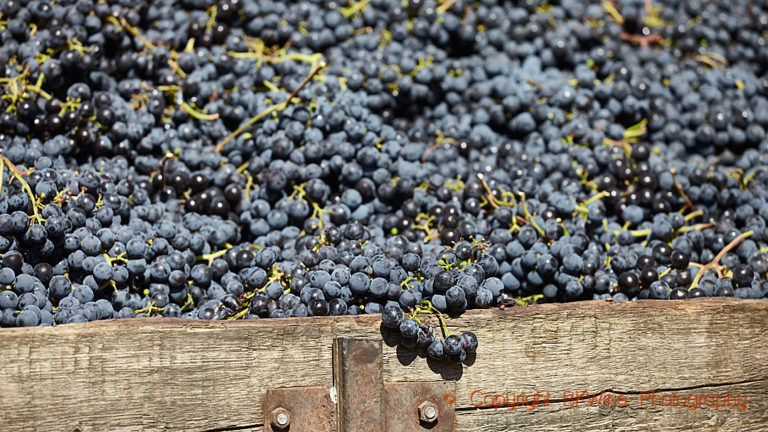
Grape sorting is a technique to improve the quality of the wine. It can take place in the vineyard, on the vine, or after harvest. Here we look at the grape sorting and selection after the harvest, at the winery.
The idea is to eliminate undesired grapes, for examples unripe or rotten grapes, and other material (branches, leaves, snails etc, sometimes called MOG, material other than grapes), and keep only the best grape raw material for the vinification. Thus it is also a way to somewhat reduce the yield.
Grape sorting is usually done by hand at a sorting table (table de trie). It can be done by sorting grape bunches, or by sorting the individual grapes (berries) after destemming. Some chateaux / wineries do both. The grapes are emptied onto a conveyor belt: the sorting table. On each side of the sorting table people inspect the grapes and remove those that are not of top quality. The grapes then continue to the crusher (fouloir) and to the normal vinification process to, hopefully, produce a better quality wine.
The latest generation of sorting machines are automatic. There is one model that separates the berries (grapes) in a liquid (must) with a well defined density, some grapes float, others sink (Tribaie or Triebaie). Another type of machine uses high speed image recognition to analyse an electronic image of the grape. If the grape is not “good looking” it is ejected by a pulse of compressed air. An older generation of automated sorting table simply sorts the grapes according to size.
The grapes that are removed in the sorting are simply discarded. They are never used for vinification.
Some argue that sorting is needed only if one has not tended the vineyard properly.
This is just a short introduction to a subject that is treated in depth in our book The creation of a wine (“Ett vin blir till”).










One Response
Do you have a print of the typographic sort depicting a bunch of grapes?